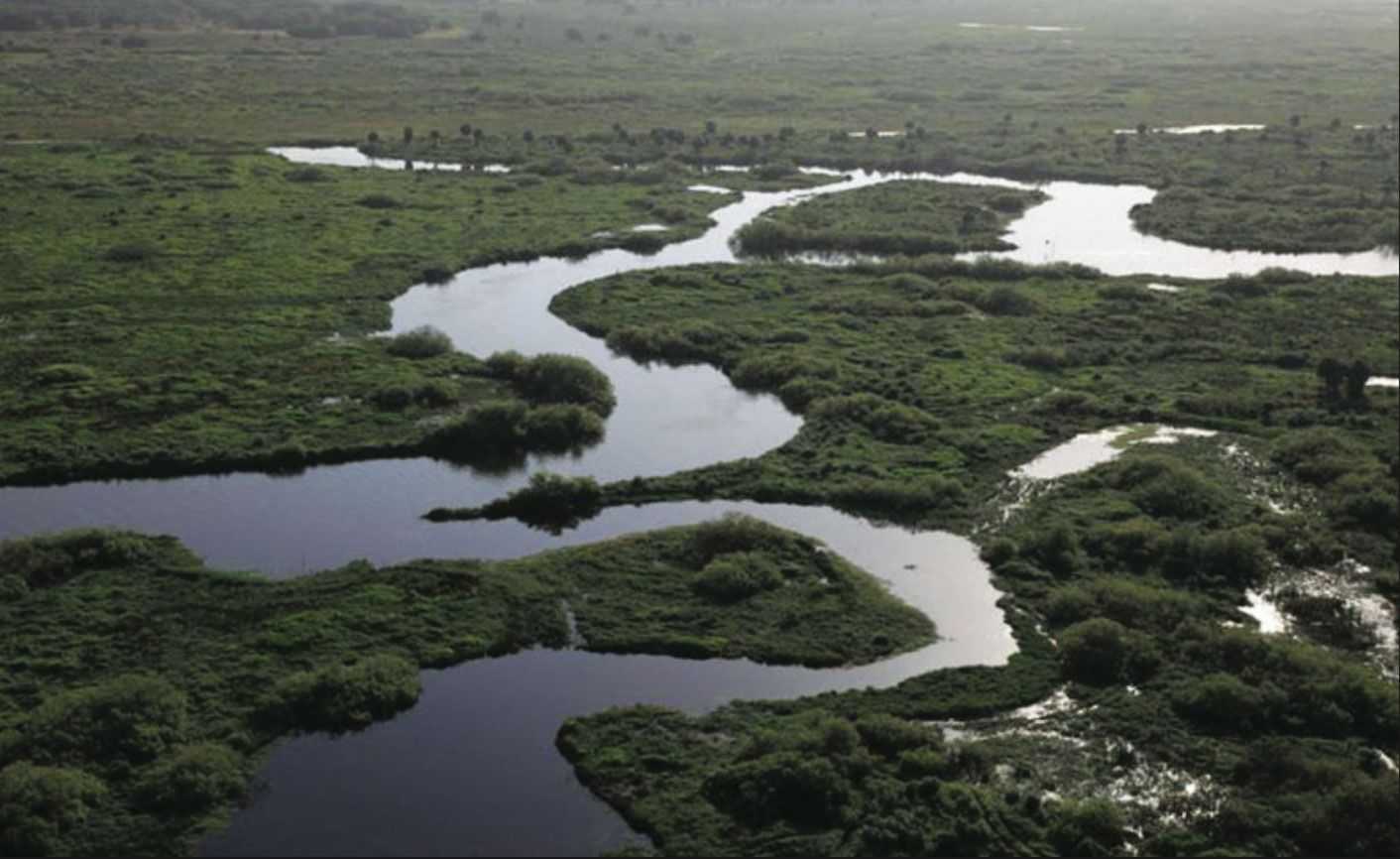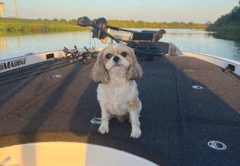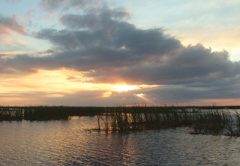Many river fishermen enjoy fishing rivers and for those of us in the counties of Polk, Highlands and Okeechobee, the obvious choice is the Kissimmee River. Originally running 103 miles (prior to 1962), from Lake Kissimmee to Lake Okeechobee, a distance less than 50 miles, the river snaked and wound an additional 50 miles creating huge floodplains every time it rained.
According to Wikipedia, The Kissimmee River arises in Osceola County as the outflow from East Lake Tohopekaliga, passing through Lake Tohopekaliga, Lake Cypress, Lake Hatchineha and Lake Kissimmee. Below Lake Kissimmee, the river forms the boundary between Osceola County and Polk County, between Highlands County and Okeechobee County, and between Glades County and Okeechobee County before it flows into Lake Okeechobee. The river was originally 134 miles in length, 103 miles of which was between Lake Kissimmee and Lake Okeechobee. It forms the headwaters of the Kissimmee River-Lake Okeechobee-Everglades ecosystem.
In 1948 the United States Congress authorized the United States Army Corps of Engineers to construct the Central and South Florida Project, which led to engineering changes to straighten, and widen the waterway. The project, while it seemed like an excellent idea at the time, was highly criticized by biologists due to the believed impact it would have on the ecosystem.
At the time this was the largest excavation project ever awarded by the Army Engineers in Florida for it called for removal of 26,500,000 cubic yards of material. In addition, seven locks had to be built because of varied water elevation in the numerous bodies of water. The general thinking at the time was that this would finally bring an end to the mass amounts of flooding in the state of Florida from Lake Kissimmee to Lake Okeechobee.
The rerouting of the river was completed in 1971, and although it was touted by many as a new tourist attraction, it turned out that the biologists were right. Rerouting the river had effectively killed off any ecosystem that relied on the floodplains. More than 90 per cent of the waterfowl that once graced the wetlands disappeared and the number of bald eagles nesting territories decreased by 70%. After the waterway was transformed into a straight, deep canal, it became oxygen depleted and the fish community it supported changed dramatically. Many believed the rerouting would be good for fishermen, unfortunately the opposite was true.
After having spent 23 years creating the channelized river, the government realized something needed to be done. As a result, they spent the next 20 years planning on how to fix it.
In 1999 re-construction began to allow rainwater to inundate floodplains in restored areas, while the natural winding floodplains were re-established. The huge project was completed in 2014.
Wildlife returned to the restored sections of the river. Muck and smothering aquatics were flushed out, sandbars emerged, and once dormant plants began to re-emerge. Flooding and continuous flow increased levels of oxygen in the water, creating near perfect conditions for aquatic invertebrates such as insects, mollusks, crayfish and freshwater shrimp. This in turn boosted fish populations and it led to a rise in bird and alligator populations. The entire food chain benefited. The Kissimmee River restoration is considered to be the largest true ecosystem restoration project in the world, attracting ecologists from other states and countries.
It’s also attracting fishermen.
The river is teeming with bass, catfish and a wide variety of panfish. Many fishermen prefer fishing the river over Lake Istokpoga and Lake Okeechobee.
Although I’ve not spent nearly as much time on the river as I have on the afore mentioned lakes, I have fished it consistently over the past 20 years. The fishing has improved considerably since my first trip off route 60 at the south end of Lake Kissimmee.
One of my best memories of fishing the river was back in the late 1990’s, before much of the restoration work was started. We were holding a bass tournament just off route 60 and we had the choice of going north and fishing the lake or going south and fishing the river. We chose to go south.
Our success was pretty limited all morning until we passed through the first lock. Fishing the west shoreline for a mile or so and then working our way back north fishing the east shoreline, as we approached the lock, we noticed a couple of boats waiting to lock through. Or so we thought.
Instead, when the lock opened, they were casting into the moving water and catching one bass after another. We quickly position our boat to take part in the action and within 15 minutes, we caught around 15 bass weighing upwards of 5 pounds each. But the action didn’t last long. When the lock closed up, the fish stopped feeding. The bite was over.
Talking with the fishermen we’d spotted earlier, we soon understood what happened. The bass, as well as catfish and bream, become aggressive when the lock opens and water comes rushing through. The moving water brings with it injured baitfish, crawfish and other insects caught up in the rush of water and the fish go crazy.
So the next time you’re fishing the river, or any body of water where locks exist, consider fishing the area when the water begins moving. It won’t last long but it will be an exciting 15 or 20 minutes.







